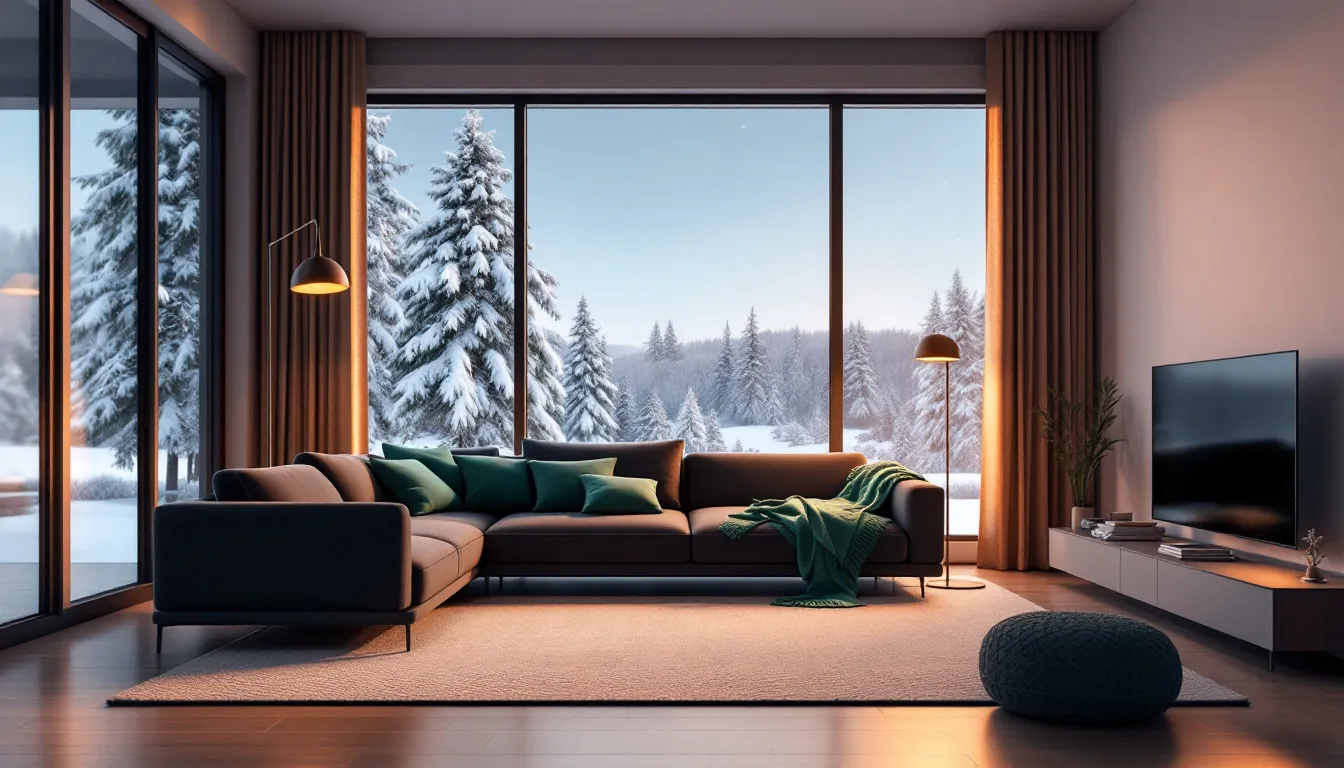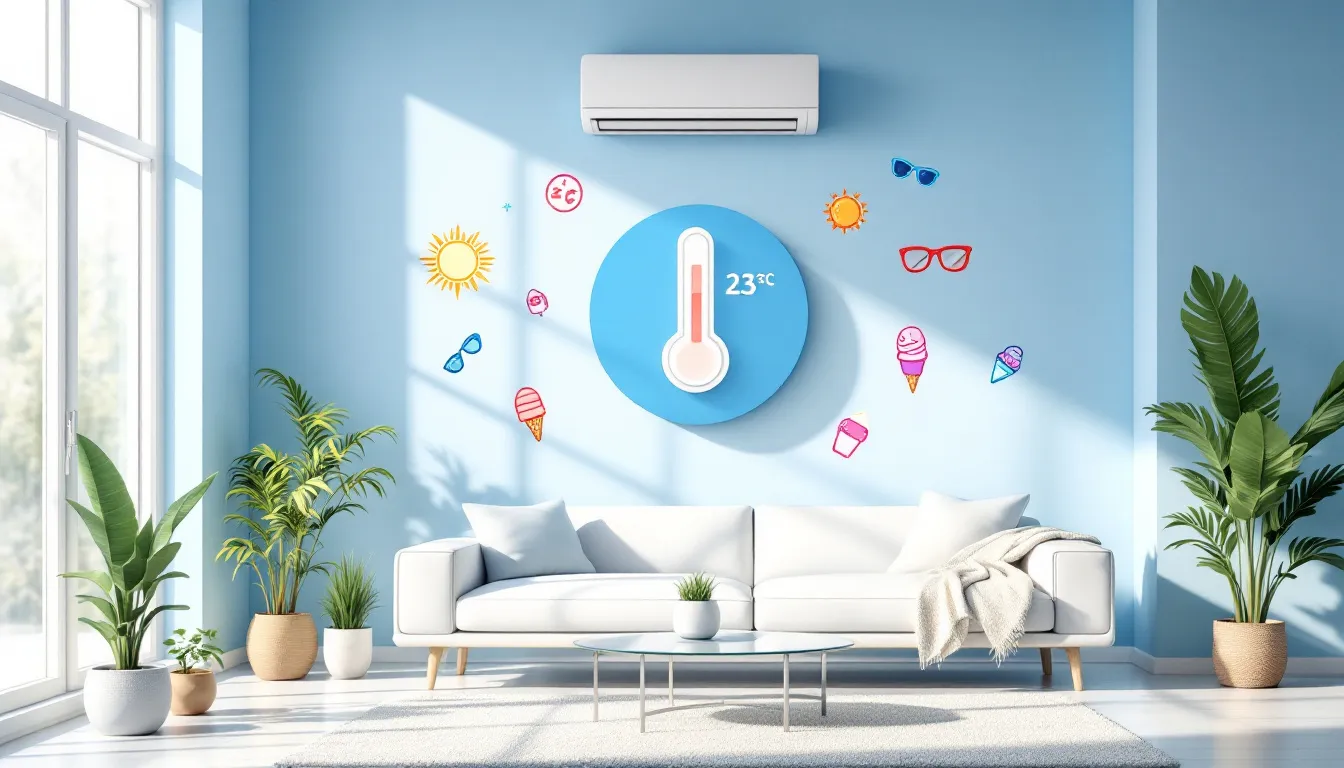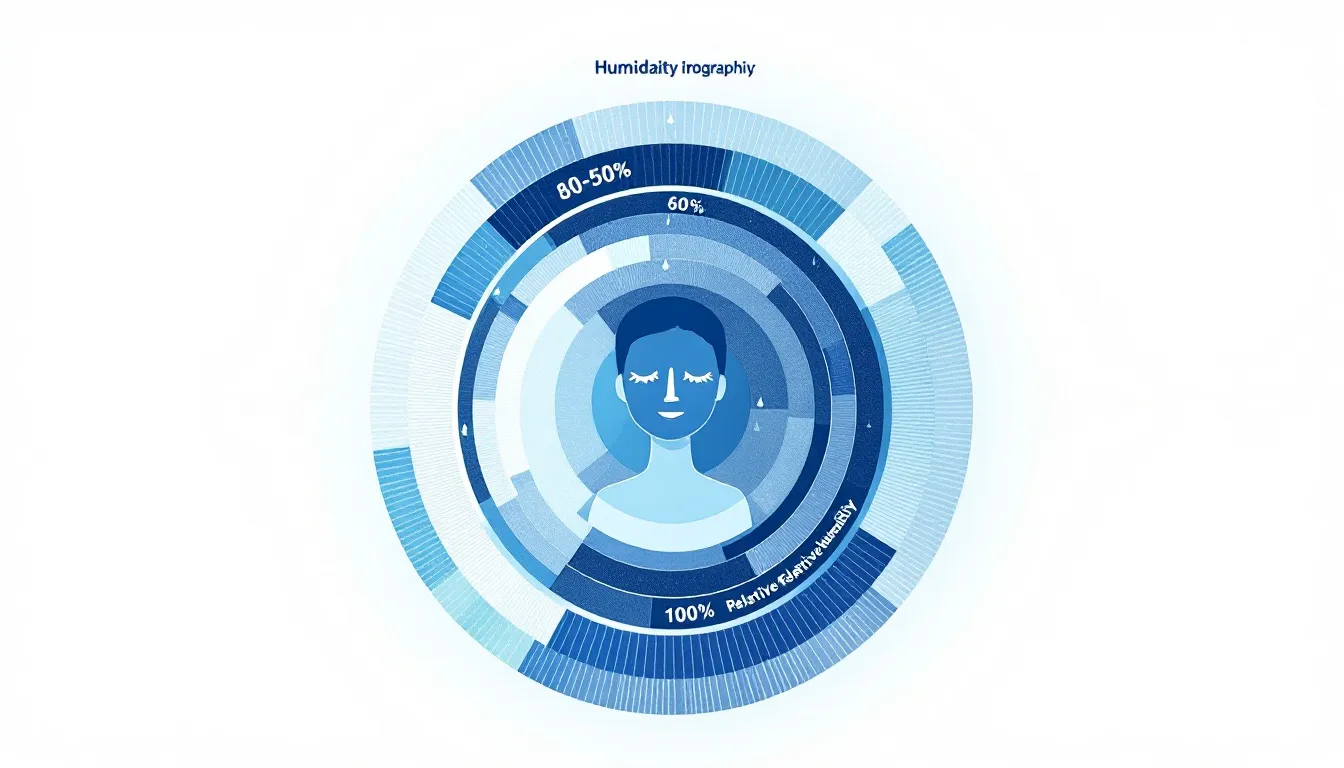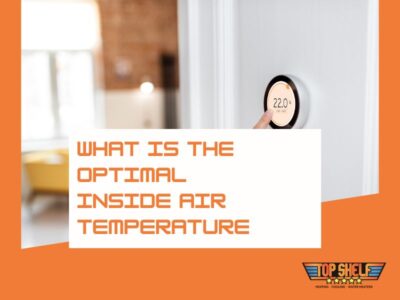Do you want to know what is the best inside temperature for your home? The optimal inside air temperature will vary on a few factors but you need to be comfortable!
Depending on where you live in the United States will determine what temperature to keep in your house, along with the time of the year. Finding the right temperature ensures comfort and efficiency year-round, but where should you start?
In this article, the team at Top Shelf Heating & Cooling of the Treasure Valley covers the best settings for different seasons, rooms, and personal needs specifically in the Boise area!
Quick Temperature Tips:
Here are some general temperature tips that highlight the guide below:
- For winter, set your thermostat to 68°F when you are home and lower it to 65°F at night to save on heating costs (also factoring in your comfort level).
- In summer, maintain a thermostat setting of 20-25°F less than the outside temperature. 72-75°F during the day and lower it to 68-70°F at night for better sleep.
- When you are not home for an extended period, you can lower your temperature to 55-60 in the winter and raise it to 78-80 in the summer.
- Regular HVAC maintenance is crucial for efficient performance, helping to avoid unexpected breakdowns and ensuring comfortable indoor temperatures.
- Consider purchasing a part thermostat to increase energy efficiency based on your daily routines.
Best Winter Temperature Settings

Winter brings its own challenges when it comes to maintaining a comfortable and energy-efficient home. Achieving the ideal home temperature during these colder months supports your health and well-being and significantly impacts your energy bills. Maintaining a consistent temperature is key to optimizing energy consumption and enhancing comfort.
Setting your thermostat to 68°F while at home and lowering it to 60-65°F at night enhances energy efficiency and reduces heating costs. However, you must also consider your comfort level. Research shows that a cooler home is better for your health when you sleep, but so is your comfort and quality sleep!
Daytime Winter Temperatures
The ideal room temperature during the day in winter is between 68-70°F. Experts recommend maintaining the thermostat at 68°F to balance comfort and energy savings. The science behind this temperature range ensures thermal comfort while minimizing energy costs and factors in the winter sun.
Nighttime Winter Temperatures
At night, it’s beneficial to lower your heat to a range of anywhere from 60-65°F. Lowering the temperature at night promotes better sleep and reduces heating costs. You also are covered at night in your bed, which keeps you warm. Returning the thermostat to 68°F in the morning maintains a comfortable environment. This method promotes better sleep and leads to significant energy savings.
Adjusting for Absence
Adjusting your Boise, Meridian, or Nampa thermostat when you are not home can lead to substantial energy savings. Research has shown that lowering your thermostat can save approximately 10% on energy bills. Adjusting the thermostat to 55-60°F still prevents frozen pipes and really conserves energy.
The idea behind this strategy is that it ensures your home remains safe and energy-efficient during your absence because you reduce your energy consumption.
Optimal Summer Temperature Settings

Summer brings a different set of challenges for maintaining a comfortable and energy-efficient home. The U.S. Department of Energy recommends maintaining an indoor temperature of 78°F for optimal comfort and energy savings. Since we have lower humidity in the Boise area, this seems plausible, but most people are uncomfortable with anything over 78. As one of the leading HVAC companies in the area, we have a pretty simple rule:
➡️ Keep your AC 20-25°F lower than the outside temperature during the day.
For example, if it is 92°F in July, the ideal room temperature range would be around 72°F for comfort. In the event it is hotter, let’s say 99°F, you will still feel comfortable inside with an AC temperature of 74-79°F.
Daytime Summer Temperatures
During the day, the recommended indoor temperature for summer is 78°F. Each degree above 72°F on your thermostat can save up to 3% on cooling costs. If 78°F is uncomfortable, you can make small adjustments by increasing the temperature by 1-2 degrees.
Pro Tip: Use ceiling fans! Ceiling fans can increase the air conditioner temperature by 2 to 3 degrees while maintaining comfort, making a room feel up to four degrees cooler.
Nighttime Summer Temperatures
The ideal bedroom temperature for restful sleep during the summer is between 61°F and 67°F. This cooler environment aligns with the body’s natural cooling process, supporting better sleep quality. Some recommendations suggest that a temperature as low as 61°F can further enhance sleep quality.
This temperature range promotes comfortable sleep during hot summer nights; however, keep in mind that you may see higher energy costs if you run your AC at a lower temperature at night. For most people in the Treasure Valley, if you simply keep your AC at 68°F and use a fan, you will be comfortable and save money!
When Away from Home
When you’re away from home during the summer, increasing the thermostat setting by 7 to 10 degrees is recommended. This adjustment can lead to significant energy bill savings, potentially up to 10%. Programmable thermostats efficiently manage temperature changes based on your schedule, ensuring comfort upon return and maximizing energy savings during your absence.
Ideal Room Temperature for Different Activities

Are you someone who works from home or has kids running around?
Different activities and rooms in your home require varying temperatures to ensure comfort and efficiency. The average temperature range generally accepted for homes is between 70 to 78°F. However, specific activities and rooms may benefit from slightly different settings.
HVAC zoning divides a home into clusters with individual temperature controls, allowing specific adjustments in different areas.
Living Areas
For living areas, the common comfort temperature is generally set around 68-72°F. This temperature range ensures comfort for daily activities and gatherings. Rooms designed for social interaction may benefit from slightly cooler settings within this range, making your living space feel inviting and pleasant.
Bedrooms
The ideal room temperature for bedrooms is between 65-68°F. This range supports better sleep quality by aligning with the body’s natural temperature regulation. The best room temperature for nighttime is 60-65°F, which promotes better sleep and reduces heating costs. Studies suggest that sleeping in a range of 60-67°F during summer enhances sleep quality.
Bathrooms
Warmer bathroom temperatures enhance comfort during bathing activities. The optimal bathroom temperature range is typically 70-75°F, which supports comfort during showers and baths. Warmer settings maintain comfort and well-being in humid environments.
Special Considerations for Vulnerable Groups
Boise is known to get pretty hot in July and very cold in January. Knowing this, it is important to keep in mind that vulnerable groups such as infants, the elderly, and pets have specific temperature needs. For example, babies may need a warmer ideal room temperature at night.
Elderly individuals are best accommodated with temperatures between 68-74°F to avoid health risks. Pets also have specific temperature requirements; dogs are comfortable at 75-78°F in summer and 68-72°F in winter, while cats prefer slightly warmer settings.
- Infants: A room temperature of 68-72°F is essential for infants to reduce the risk of overheating or getting too cold.
- Elderly: Between 68°F and 74°F elderly men prefer a comfort temperature of around 70.9°F, which is within the best temperature range for seniors and the ideal temperature for their comfort. The minimum temperature recommended for the elderly is 65°F, while temperatures above 80°F can lead to health issues.
- Pets: The ideal indoor temperature range for dogs during summer is 75-78°F, and during winter, it is between 68-72°F. Larger cats prefer a slightly warmer indoor setting, ideally between 68-70°F during winter.
The Role of Humidity in Indoor Comfort

Humidity significantly influences indoor comfort and our perception of temperature. Luckily, humidity is not as much of a factor in the Treasure Valley since the air is dryer. However, when the summer months arrive, and there is an off chance of humidity, there are ideal temperature settings to minimize humidity effects.
Optimal indoor humidity levels are crucial for comfort and a pleasant living environment.
Ideal Humidity Levels
The optimal indoor humidity range is between 30% and 50%. Maintaining humidity within this range helps improve thermal comfort by making the air feel warmer in the winter and cooler in the summer. Proper humidity levels also prevent respiratory hazards by reducing allergens and harmful microorganisms like mold.
When it comes to humidity, there are a few factors, such as home insulation, design layout, the number of occupants, and humidity levels, that influence thermal comfort. To counter humidity, you can use dehumidifiers, humidifiers, and ventilation to help maintain the best room temperature!
Energy-Saving Tips and Thermostat Strategies
Implementing energy-saving tips and optimizing thermostat strategies can significantly reduce energy consumption and costs. Smart thermostats conserve energy and reduce costs through precise temperature control that adapts to user habits.
Setting the thermostat to 50-60°F when away prevents frozen pipes and saves on heating costs. Raising the temperature setting when you leave can save up to 10% on energy bills.
Smart Thermostats
Wi-Fi-enabled smart thermostats allow remote control of home climate through smartphones. These devices adjust settings remotely, enhancing comfort and efficiency. Smart thermostats detect when you’re away and adjust temperatures to save energy. Many of the Wi-Fi-enabled thermostats learn your preferences/routines and create energy usage-saving schedules, making them valuable for managing home temperatures.
➡️Order a smart thermostat with Top Shelf Heating and Cooling, and we can install it for you today!
Programmable Settings
Programmable thermostats store multiple daily temperature settings for tailored comfort. These devices can be scheduled to follow daily routines, reducing energy use. Remember, for each degree you set your thermostat above 72°F, you can save up to 3% on cooling expenses.
Ceiling Fans and Ventilation
Ceiling fans can significantly improve cooling efficiency when used alongside HVAC systems. They create a wind-chill effect, making occupants feel cooler and allowing for higher thermostat settings without sacrificing comfort. Utilizing ceiling fans with air conditioning reduces energy costs by allowing higher thermostat settings. Combining ceiling fans, proper ventilation, and HVAC systems can create a more comfortable living environment while enhancing energy efficiency.
Importance of Regular HVAC Maintenance
Regular HVAC maintenance is essential for optimal performance and energy efficiency. We always help out clients remember that proper maintenance prevents system breakdowns during peak usage times. We can also identify any potential upcoming problems, such as worn components, avoiding unexpected HVAC failures.
Fall and Spring seasonal maintenance directly contributes to HVAC system effectiveness and longevity, thus keeping you comfortable! Learn more about HVAC maintenance below:
GET IN TOUCH
Schedule a Visit
Seasonal Checkups
Seasonal HVAC check-ups, typically occurring twice a year, ensure that your air conditioning system is ready for both summer and winter demands. It helps maintain an ideal home temperature by ensuring your HVAC system operates efficiently. If repair costs exceed the price of a new unit, consider an AC replacement to ensure continued comfort and energy efficiency.
You can use our pricing calculator here to get a rough estimate of how much a new system will cost:

HVAC Replacement Cost Calculator
Easily estimate the cost of a new HVAC system for your home with this awesome calculator!
Thanks, Kevin with Top Shelf Heating & Cooling will contact you soon
What type of home do you own?




Which system do you need to replace and/or repair?
If you are not sure what you need, simply choose the HVAC system that you currently have in your home.





Where is your HVAC system currently located?




How large is your home?
Simply use the slider to determine the approximate costs to replace your HVAC system based on average installation and equipment costs. *Note, this simply a projected cost estimate.
What is your home’s square footage?
Simply use the slider to determine the approximate costs to replace your HVAC system based on average installation and equipment costs. *Note, this simply a projected cost estimate.
What is the square footage of your home?
Simply use the slider to determine the approximate costs to replace your HVAC system based on average installation and equipment costs. *Note, this simply a projected cost estimate.
How many square feet is your home?
Simply use the slider to determine the approximate costs to replace your HVAC system based on average installation and equipment costs. *Note, this simply a projected cost estimate.
Last Details & Extras
Do you have special requests or add-ons?
Do you want to learn about our air quality products? Check all that apply:
Approximate Total Costs:
The final estimated price is :
Summary
| Description | Information | Quantity | Price |
|---|---|---|---|
| Discount : | |||
| Total : | |||
Addressing Common Issues
Leaky air ducts, poor insulation, and overgrown landscaping commonly affect HVAC efficiency. These issues can cause hot and cold spots and increase energy consumption. Old and faulty HVAC units often cause inconsistent temperatures due to leaks. Promptly addressing these issues ensures consistent warmth, which is crucial for older adults sensitive to temperature fluctuations.
Final Tips
Maintaining the optimal indoor temperature is a delicate balance for Boise residents. We notice drastic temperature fluctuations in the summers and winters. By adjusting temperatures based on your daily routine, including when you’re away from home, you will experience energy savings and more comfort.
The best tip is to incorporate smart thermostats and programmable settings and utilize ceiling fans to help with your home’s thermal comfort and efficiency. Regular HVAC maintenance ensures your system operates effectively, preventing unexpected breakdowns and extending lifespan. Whether it’s maintaining the right temperature for vulnerable groups like infants, the elderly, and pets or managing humidity levels for overall comfort, these strategies help create an ideal indoor environment.
Embrace these tips to transform your home with the perfect temperatures year-round so you can fall asleep easily and stay cool and dry!
Frequently Asked Questions
1. Is 72 a good temperature for air conditioning?
Setting your AC to 72°F is a great choice; it keeps you comfortable while also being energy efficient. Many people find this temperature just right for indoor spaces.
2. What is the ideal daytime temperature setting for winter?
The ideal daytime temperature setting for winter is between 68-70°F, as this range strikes a good balance between comfort and energy savings. A setting around 68°F is particularly recommended for optimal warmth without wasting energy.
3. How can I save energy while away from home in the winter?
To save energy while you’re away this winter, set your thermostat between 55-60°F. This keeps your home safe from frozen pipes and cuts down on energy costs!
4. What temperature should I set my thermostat to at night during summer?
To get a good night’s sleep during summer, set your thermostat between 60.8°F and 67°F. This cooler temperature improves sleep quality.
5. Why is humidity important for indoor comfort?
Humidity is crucial for indoor comfort because it influences our temperature perception and keeps allergens at bay. Keeping it between 30% to 50% helps you feel more comfortable and healthy.



 HVAC System and Mold: Health Problems From Mold
HVAC System and Mold: Health Problems From Mold